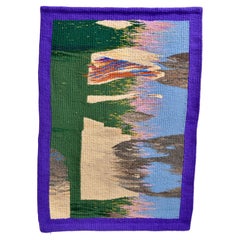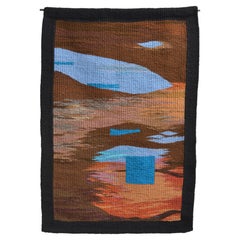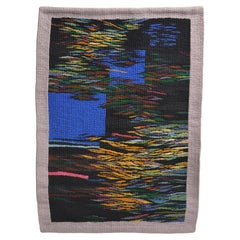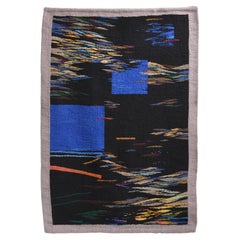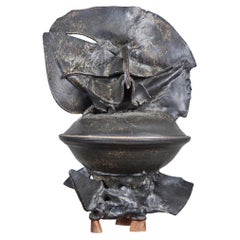Michael Schrier
Vintage 1980s American Modern Tapestries
Yarn
Vintage 1980s American Modern Tapestries
Yarn
Vintage 1980s American Modern Tapestries
Yarn
Vintage 1980s American Modern Tapestries
Yarn
Recent Sales
Vintage 1980s American Abstract Sculptures
Ceramic
People Also Browsed
21st Century and Contemporary English Modern Candlesticks
Brass
21st Century and Contemporary American Chandeliers and Pendants
Brass
2010s Italian Wall Lights and Sconces
Brass
21st Century and Contemporary American Sofas
Linen, Velvet
21st Century and Contemporary Danish Mid-Century Modern Wall Mirrors
Brass
Mid-20th Century Polish Scandinavian Modern Tapestries
Wool, Cotton
21st Century and Contemporary Italian Classical Roman Stone Sinks
Marble
2010s American Mid-Century Modern Table Lamps
Brass
21st Century and Contemporary Italian Modern Figurative Sculptures
Concrete, Cement
Antique Early 19th Century Portuguese Blanket Chests
Chestnut
Vintage 1970s Swedish Scandinavian Modern Wall Lights and Sconces
Fabric, Pine
2010s American Organic Modern Coffee and Cocktail Tables
Hardwood, Walnut
20th Century Italian Post-Modern Beds and Bed Frames
Aluminum
Vintage 1970s Swiss Post-Modern Sectional Sofas
Leather
Vintage 1950s German Mid-Century Modern Wall Lights and Sconces
Metal
Vintage 1950s American Mid-Century Modern Chaise Longues
Bronze
A Close Look at Modern Furniture
The late 19th and early 20th centuries saw sweeping social change and major scientific advances — both of which contributed to a new aesthetic: modernism. Rejecting the rigidity of Victorian artistic conventions, modernists sought a new means of expression. References to the natural world and ornate classical embellishments gave way to the sleek simplicity of the Machine Age. Architect Philip Johnson characterized the hallmarks of modernism as “machine-like simplicity, smoothness or surface [and] avoidance of ornament.”
Early practitioners of modernist design include the De Stijl (“The Style”) group, founded in the Netherlands in 1917, and the Bauhaus School, founded two years later in Germany.
Followers of both groups produced sleek, spare designs — many of which became icons of daily life in the 20th century. The modernists rejected both natural and historical references and relied primarily on industrial materials such as metal, glass, plywood, and, later, plastics. While Bauhaus principals Marcel Breuer and Ludwig Mies van der Rohe created furniture from mass-produced, chrome-plated steel, American visionaries like Charles and Ray Eames worked in materials as novel as molded plywood and fiberglass. Today, Breuer’s Wassily chair, Mies van der Rohe’s Barcelona chair — crafted with his romantic partner, designer Lilly Reich — and the Eames lounge chair are emblems of progressive design and vintage originals are prized cornerstones of collections.
It’s difficult to overstate the influence that modernism continues to wield over designers and architects — and equally difficult to overstate how revolutionary it was when it first appeared a century ago. But because modernist furniture designs are so simple, they can blend in seamlessly with just about any type of décor. Don’t overlook them.
Finding the Right Tapestry for You
Whether you hang them behind your bed as a dazzling alternative to a headboard or over the sofa as a large-scale focal point in the living room, vintage tapestries can introduce an array of textures and colors to any space in your home.
Woven wall hangings haven’t consistently enjoyed the popularity or earned the highbrow status that other types of wall decorations have over the years, at least not since the 1970s, which was somewhat of a heyday for tapestries. Today, however, these tactile works of art are seeing a renaissance, as modern weavers are forging new paths in the medium while the demand for antique and vintage tapestries continues to grow.
“We are drawn to texture in environments, and we see tapestries as a subtle layer of soft ornament,” says Lauren Larson of the New York design duo Material Lust. Indeed, and a lot of opportunity comes along when decorating with this distinctive brand of soft ornament.
Think of wall hangings as paintings created by hand with fabric instead of oil or watercolors. If you’re not simply securing your treasure to a wall with nails, pushpins or Velcro, tapestries can be stretched over a frame, used to create a canopy in a cozy living-room corner, hung from a rod or placed inside a shadowbox. And because this kind of textile art is hundreds of years old, options abound with respect to subjects and designs.
For richly detailed depictions of landscapes and garden scenes, look to antique Chinese tapestries and Japanese tapestries. Aubusson tapestries are ornate wall hangings manufactured in central France that are also characterized by romantic portrayals of nature. For weavers of mid-century modern tapestries, as well as those working in textile arts today, the styles and subject matter are too numerous to mention, with artists exploring experimental shapes, bold colors and provocative abstract designs.
Antique, new and vintage tapestries can make a room feel warm and welcoming — find yours on 1stDibs now.
